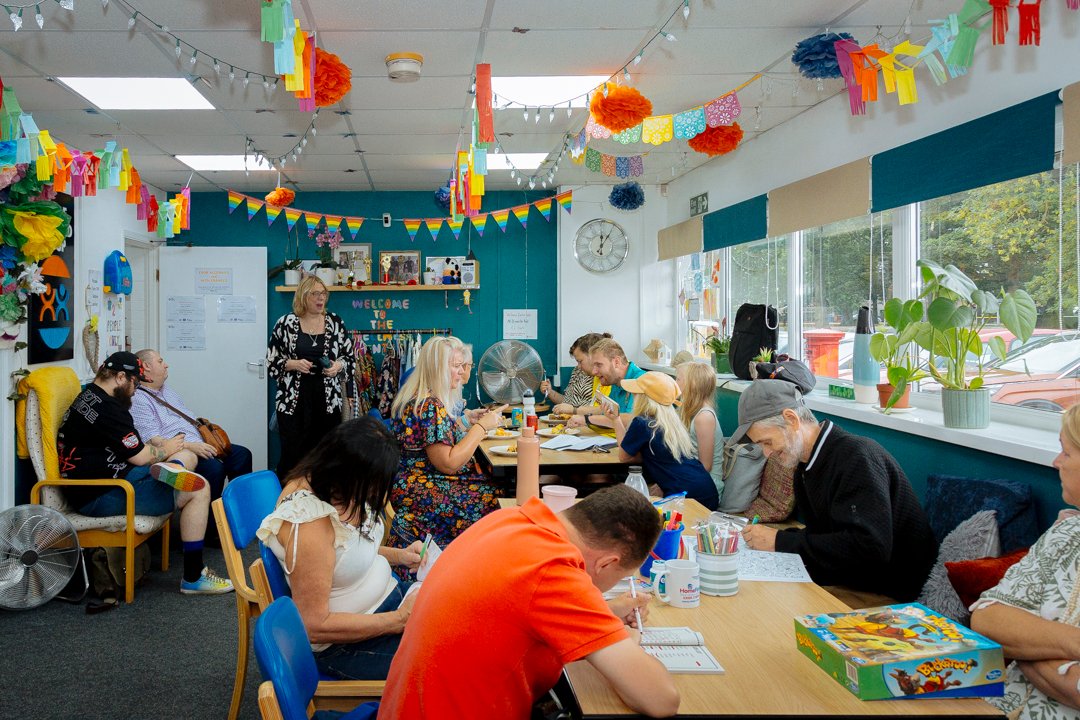Buildings give communities space for a better future
Communities need spaces to develop and thrive, which means buildings can really matter.
If local leaders want to create long-term resilience to tackle hardship, they need to turn their attention to buildings. Every community group providing a vital service should be able to get, maintain and leverage a building that can stop their reliance on piecemeal grants. Perhaps a pub, a café, a hairdresser or another hangout protected from the vicissitudes of the market, but all neighbourhoods should have one. To say these places are just bricks and mortar isn’t true, they provide the shelter and structure we all need to flourish.
Don’t devalue bricks and mortar
Community campaigners can spend a lot of time arguing against bricks and mortar. They point out that too many levelling up schemes are all capital funding for shiny new buildings and no revenue to pay the staff to maintain them. They criticise council plans shouting about ‘ambitious new sites’ in town centres without mentioning the communities that bring them to life. Think of the people, they say. Stop fixating on hard hats and high-vis jackets.
But, sometimes, buildings really do matter. In particular, premises owned and operated by community groups can make or break regeneration. Church halls, youth centres, community cafes, shops, clubs or pubs, serve a broader purpose, as places to meet, opportunities to raise funds, sources of local pride, and avenues for young people to develop.
Buildings are essential
Across the country, community organisations are using their buildings to tackle hardship. In Oldham, the Greenacres Community Centre hosts the ‘Men Behaving Dadly’ support group, and cookery classes partly funded by an on-site arts and crafts shop. Moat House Community Trust in Coventry runs adult skills and English language classes in one deprived ward to support their ‘Grub Hub’ pantry. In South Wales, the Barry Uniting Church built the Bridge Between Community Centre at their new premises, which included a permanent spot for a locally-run café that provides supported employment for vulnerable locals.
An income stream and place to meet
Community buildings and assets are crucial because they serve a dual purpose. On one hand, they can generate a reliable stream of independent funding that would otherwise be out of reach for local groups, and charities dependent on short-term grants: room rental, or the takings from a café or shop are a lifeline. On the other hand, these buildings are integral to actually delivering successful community services. They provide spaces for groups to meet, classes to take place, and support to be provided.
These buildings are also social hubs for neighbourhoods where the pubs have long been boarded up. In 1989, Ray Oldenburg wrote about ‘The Great Good Place’, those third spaces that aren’t home or work which sustain the relationships central to our social fabric. In towns that have taken the biggest economic hits, coffee shops and cafes are more likely to be run by community groups than commercial chains.
Government must make it easier for communities to own buildings
The way local groups come to own their buildings is often haphazard. It could be a former hall next to a site of worship that was gifted to a trust. Or a council asset that was transferred, possibly because the local authority didn’t have the appetite (or budget) to undertake repairs. Others are remnants of old government regeneration programmes, like Labour’s New Deal for Communities.
If we want to expand community capacity, we must take the physical infrastructure that supports it more seriously. Areas with the most limited community capacity might struggle to develop and maintain local buildings in the first place, making them a priority for any state support. At a national level, there have been some promising steps: Whitehall is finally beginning to recognise the importance of local assets. The Community Ownership Fund provides capital to groups looking to take over local sites. The new long-term endowments for 55 towns across the UK can be used to build or refurbish premises as well as pay the staff to operate them. These schemes could be bigger and bolder, the organisation Power to Change has, for instance, suggested a High Street Buyout Fund to purchase and transfer vacant units blighting town centres to the community.
The most important action
The most important action can be taken at the local level, if councils get the right support, whether that’s technical assistance or additional investment. More areas need an up-to-date list of Assets of Community Value to protect sites which serve an important local role. More buildings need to be transferred from council ownership to communities, and when they are, they should be in decent condition, not in need of repairs or refurbishment. Developers constructing new homes or remodelling town centres should be required to identify and carve out specific spaces for communities to meet, support one another, and build a better future. These changes would be a great start in providing structure and shelter to tackle hardship, and allowing people to flourish.
About the author
Adam Hawksbee is the Deputy Director of Onward. He is also Chair of the Towns Unit in the Department for Levelling Up, Housing and Communities.

This idea is part of the neighbourhoods and communities topic.
Find out more about our work in this area.